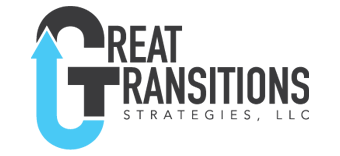“I hate going to networking events! I feel as if everyone is trying to get something from me. Yet, I am regularly told how important networking is. How do I get better?”
Three considerations.
- Warm comfortable rather than cold uncomfortable connections
- Learn don’t teach
- Give don’t take.
Let’s go through these three considerations and see if they change your mindset towards networking and make you more effective.
As you go through this analysis, put in your mind, how you network now and the purpose of your networking. Are you trying to expand your professional reach, work on a promotion, or change positions? Define the purpose of your networking.
Warm and Comfortable Rather than Cold and Uncomfortable
Now that you defined why you are networking. Determine the types of environments and settings comfortable for you? Where is the event, who is there, and how big? They all make a difference. Think of a spectrum from left to right with the left being comfortable.
If you look at the participants, comfort typically starts with family, friends, and as you move to the right brings in professional peers, professionals in the same field, moving to participants you have less in common with. Use this information to decide the type of crowd that works for you. Then think size followed by maybe the venue.
Next, where do you find these groups? Think about alumni, professional, industry, or other interest groups. As an executive coach human resource groups such as the Society for Human Resource Managers work well for me. They understand the profession and have coaching requirements. With an engineering and military background, I am also comfortable with technical and veteran groups.
What feels good to you?
Learn Don’t Teach
Ever experienced that individual at a networking event who assertively introduces himself? “Hey Gary, how are you? I’m Bob a local real estate broker, in the residential and commercial market. I can serve all your real estate needs. Just so you know, I have been the top real estate sales broker in the metro area 4 of the last 5 years. Here is my card. Call if you have any real estate needs.”
Then off they go and you are thinking: what in the world was that?
Bob was focused on teaching you about him. Would providing a chance for you to learn from Bob, been more effective?
Are you a Bob? Sometimes we all have a little bit of Bob in us. We are at this networking event to let people know what we do and how good we are. It’s natural. The problem, it doesn’t work.
Flip the script. If you meet Bob, rather than giving him your elevator pitch, start with learning about him.
“Hey Bob, I see you’re in real estate. Tell me about your practice”
“I do residential and commercial in the 5-county area. On the commercial side I focus on industrial properties in the 100,000 to 200,00 square foot range.”
This gives you the opportunity to learn and make a connection. At some point the conversation will turn back to you. “What do you do?” If the conversation does not, that is also an indication.
“I am executive coach, who assists c-suite executives maximize their leadership potential.”
Rather than an exchange of elevator pitches, we have an exchange of thoughts and genuine interest. It is the opportunity to start building a relationship. Which leads to the next element; Give, don’t take.
Give Don’t Take
The more you learn about an individual, the greater the likelihood you may be able to assist them.
“Bob that is interesting, I have a colleague in the manufacturing space looking for a larger building with a loading dock. I will put him in contact with you.”
I always have the mindset of how I might be able to assist the individuals I meet. This may take some time before you offer access to your network.
Closing Thoughts
Put yourself in an environment that is comfortable to start the snowball rolling.
Be a consistent participant in events that are a good fit. One-time networking events rarely produce fabulous results. Being a regular allows mutually beneficial trusting relationships to grow.
Networking is an important skill to develop. If you want something out of your network, consider the investment you put into it.



